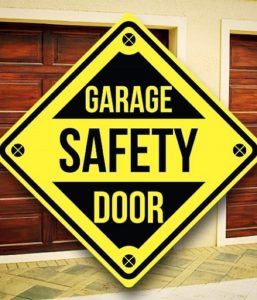Garage Door Safety

Garage door safety is not just the homeowner’s responsibility, but the garage door industries as a whole and as the colder weather sets in so do the garage door problems.
We have decided to list a few precautions to help the homeowner safe money and be protected against possible garage door problems. It is recommended by Liftmaster, Chamberlain and Sears/ craftsman to conduct the following safety test at least once a month. If you have any problems or concern please call to schedule for a technician to look at the issue. Remember estimates are free and our Maintenance is very affordable.
To reduce the risk of INJURY or DEATH:
- Incorrect adjustment of garage door travel limits will interfere with proper operation of the safety reversal system.
- After any adjustments are made, the safety reversal system MUST be tested. Door MUST reverse on contact with the 1-1/2” (3.8cm) high object (or 2×4 laid flat) on floor.
- In the event the garage door becomes obstructed, detach garage door from garage door opener by pulling down on the red emergency release handle.
SAFETY REVERSE TEST
Repeat every month or after any repair or adjustment of the garage door opener and/or garage door is made.
- With the garage door fully open, place a 1-1/2” (3.8cm) object (or a 2×4 laid flat) on the floor, centered under the garage door. The garage door MUST REVERSE ON CONTACT WITH THE OBSTRUCTION.
If the Garage door stops and does not reverse on the obstruction, INCREASE THE DOWN TRAVEL. See the Adjustment Section of your owner’s manual. REPEAT TEST.
NOTE: On a sectional garage door, make sure limit adjustments do not force the garage door opener arm beyond a straight up and down position.
- When the garage door reverses upon contact with the 1-1/2” object, remove the object and open/close the garage door 3 or 4 times to test the adjustment.
If the garage door will not reverse after repeated adjustment attempts, call a trained garage door technician.
GARAGE DOOR BALANCE TEST
Weak or broken garage door springs could cause the garage door to fall rapidly or unexpectedly resulting in serious injury, death or property damage.
- CLOSE GARAGE DOOR, then pull down on the red emergency release handle. The garage door opener will disconnect. If the garage door opener has a power door lock, slide the lock to release it.
- Raise and lower the door manually to see whether there is binding or sticking.
- Release garage door about halfway open to test for balance. It should stay in any point of travel, supported entirely by its springs.
- The opener will reconnect automatically when the garage door control or remote control button is pressed. If not, pull the emergency release handle again.
EMERGENCY RELEASE
- In the event the garage door becomes obstructed, detach the garage door from the garage door opener by pulling down on the red emergency release handle.
- If you need to pull the emergency release handle when the door is open, be sure no one is standing in the way of the garage door travel.
- In case of a power failure, pull down on the red emergency release handle.
- Garage door can be operated manually until the power is restored.
- Do not use emergency release handle to pull garage door open or closed.
Please give us a call at 314-484-3667, 636-293-3007 or 618-698-8058 if you have any Garage Door questions. Our goal as always is to deliver Quality You Expect, Service You Deserve.
